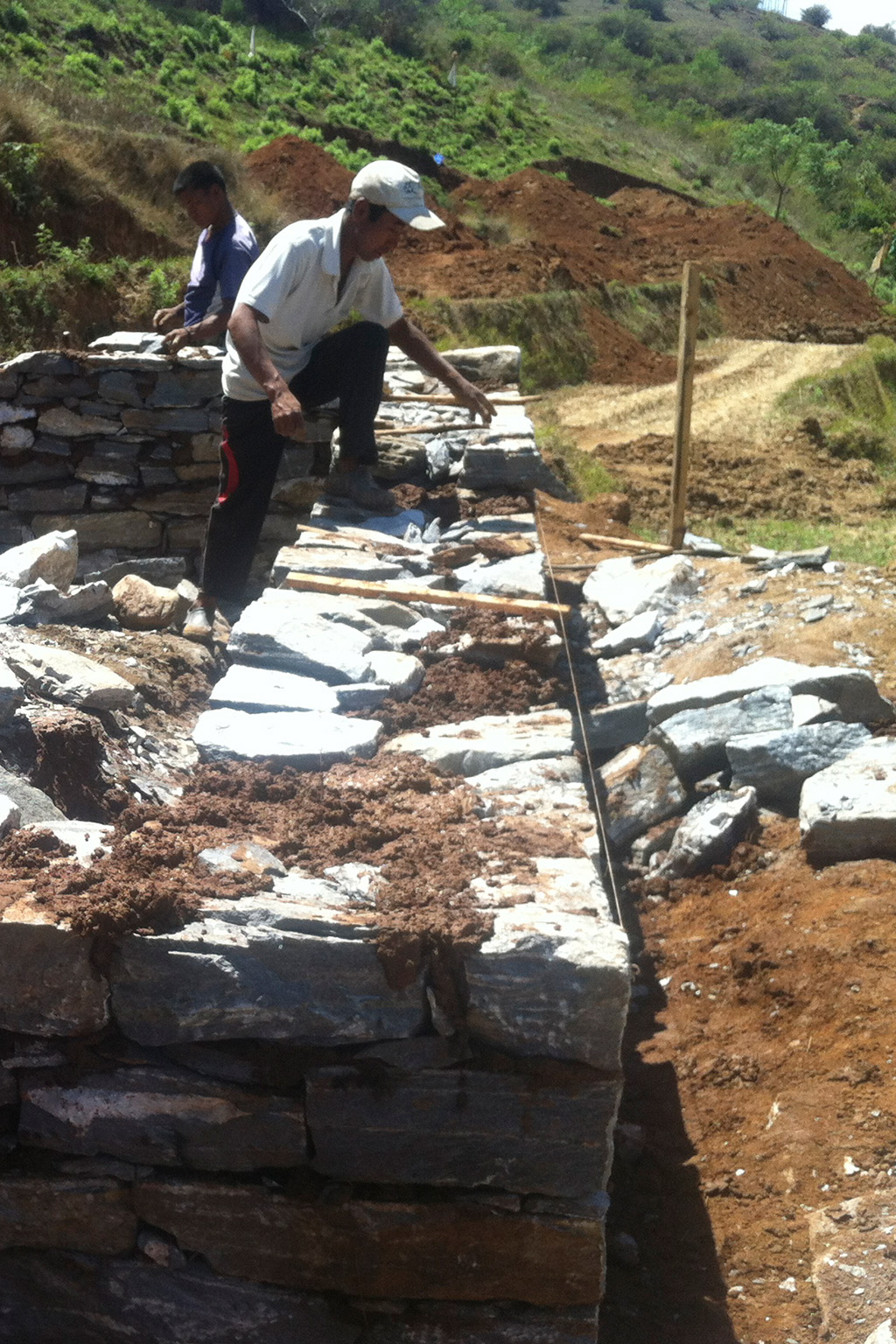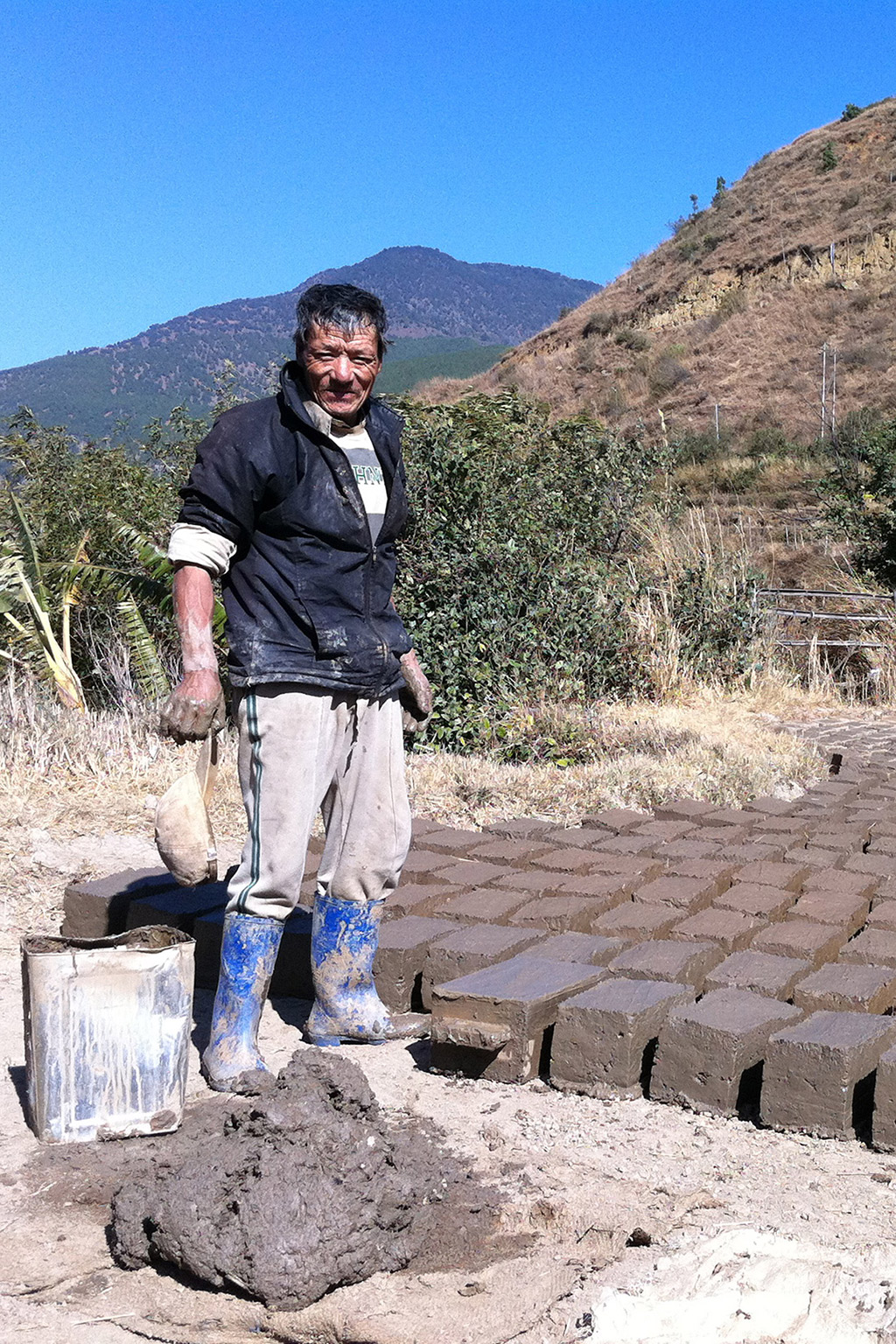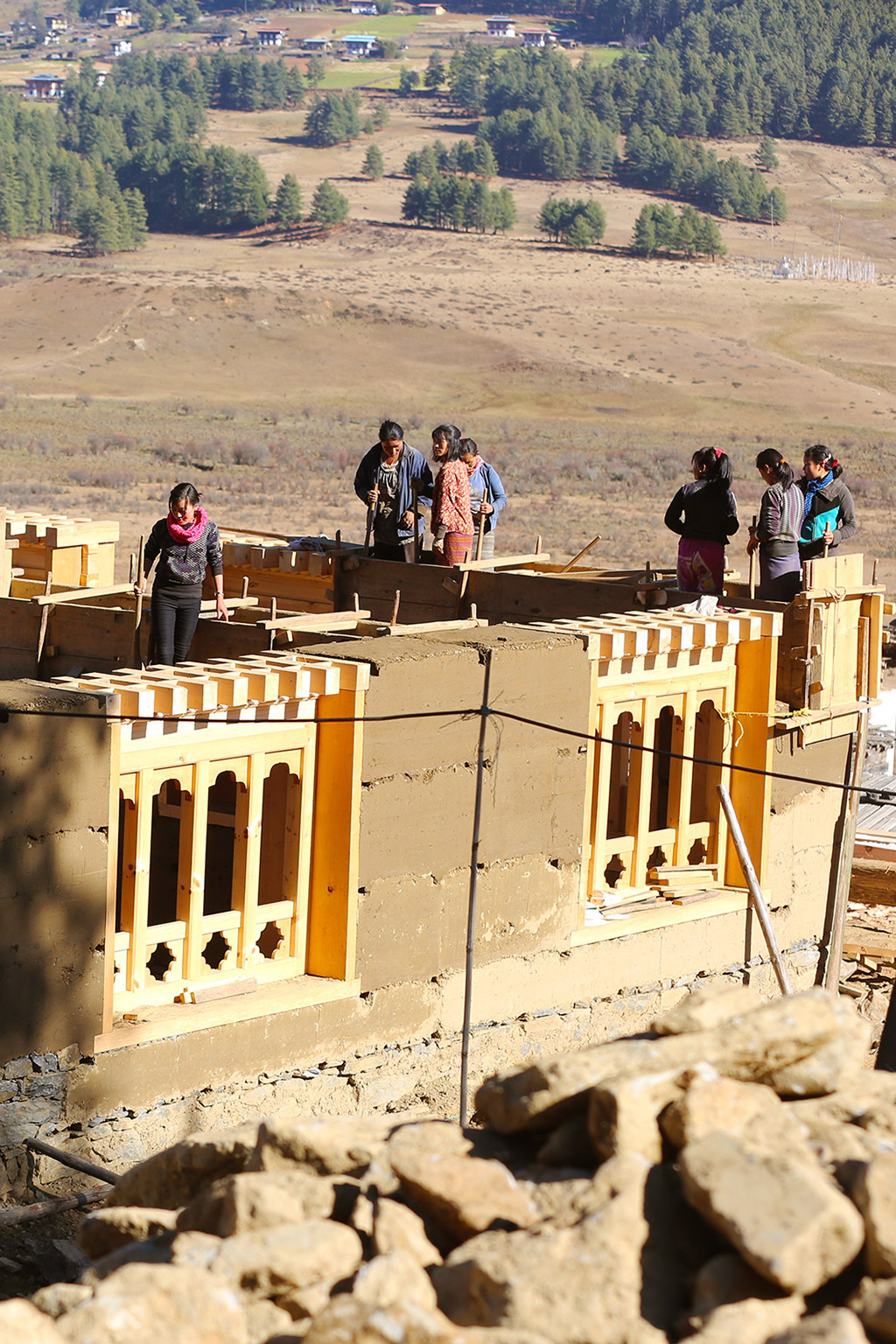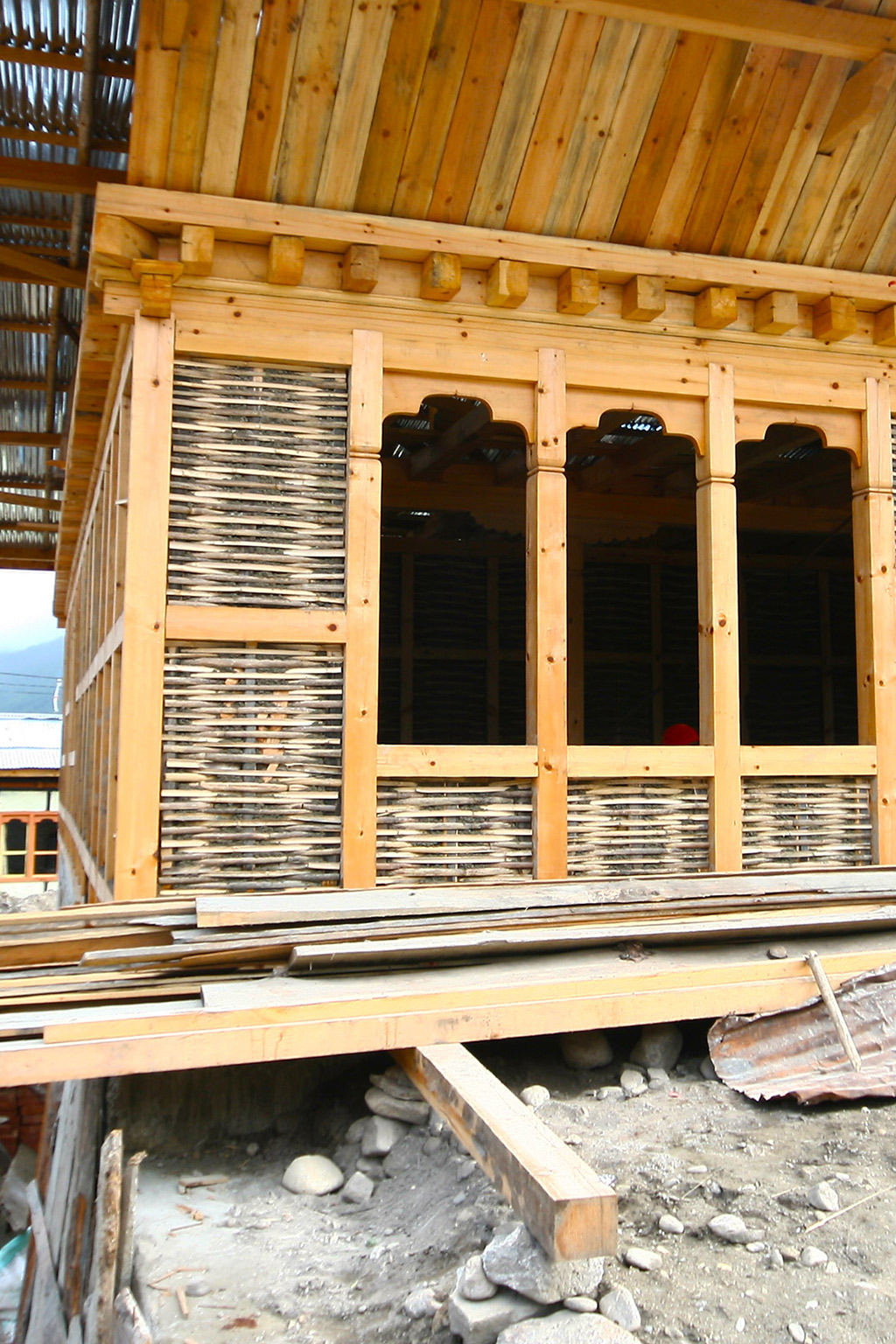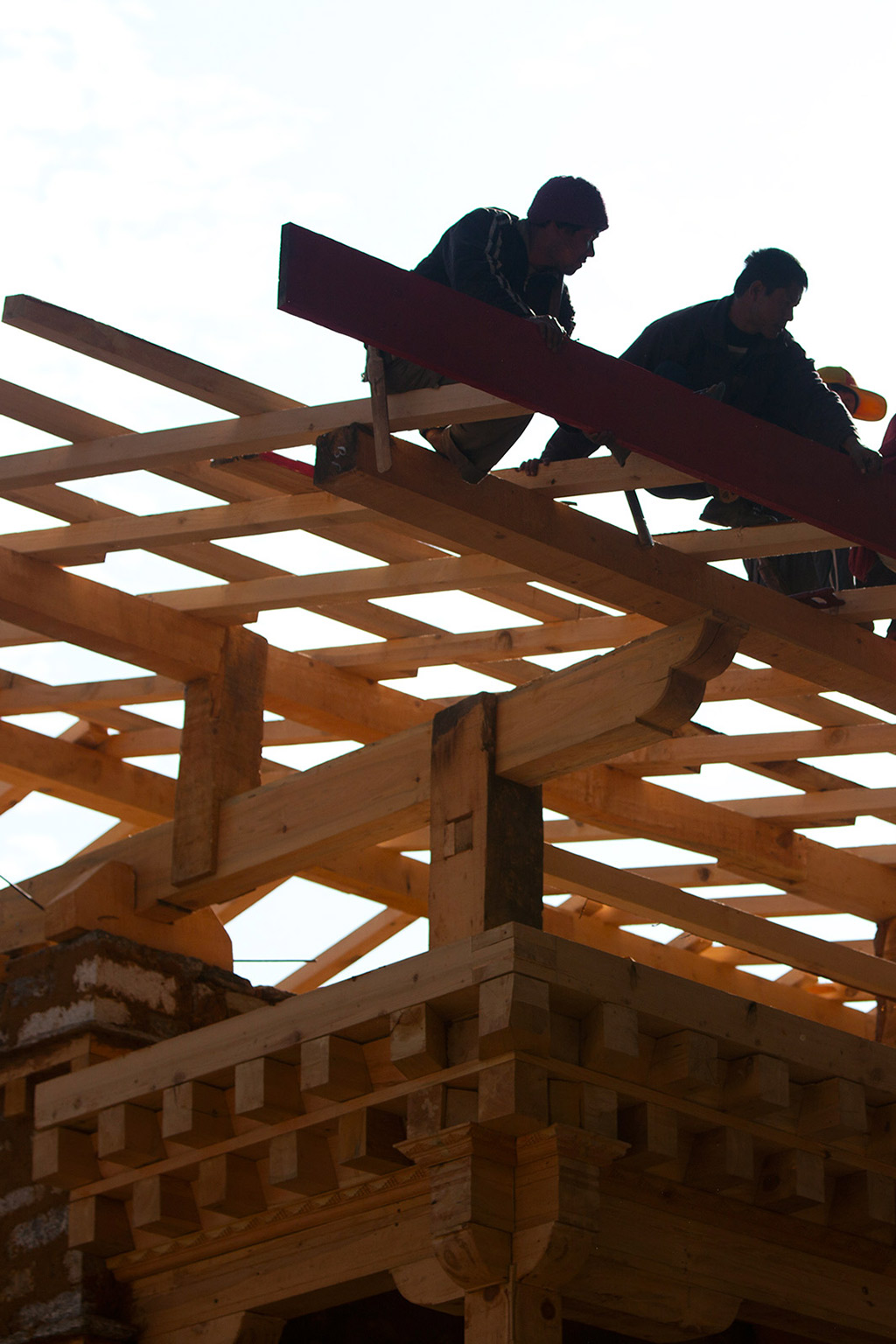Many Hands Make Light Work
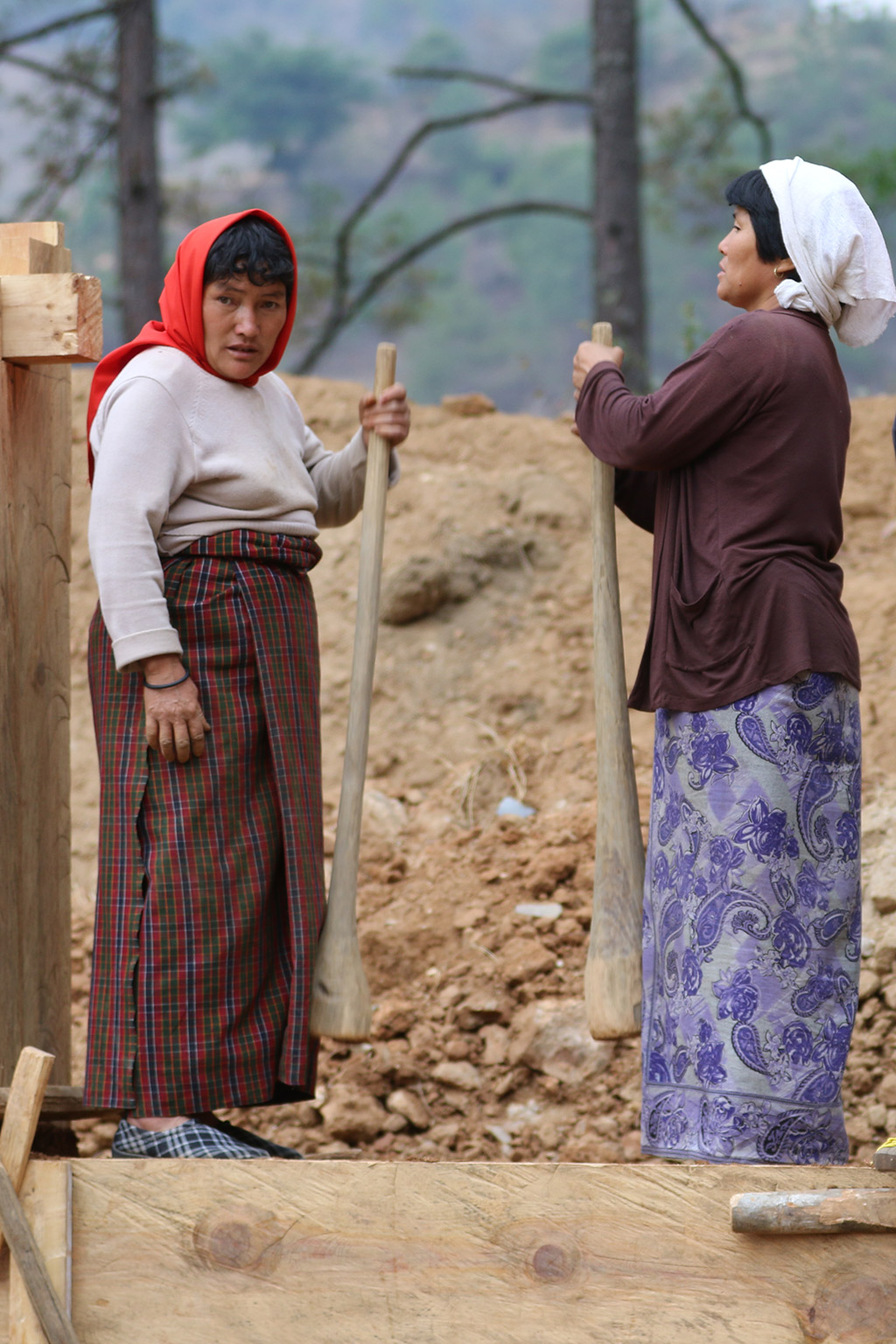
One of Ugyens’ brothers, Ugyen Penjor, lives in Pangsho with his wife Phenkey, while their children work in Thimphu. Over a sumptuous lunch of wild mushrooms from the forest, they catch up on family news and politics. One of their younger brothers is building a house, as the older house needed too much repair. He shares that he has discussed his needs with his brother-in-law, Tobgay, and a few others in the village with the experience and knowledge of building. He will now need to consult an astrologer to finalise the positions of various parts of the house, in order to build his home along the principles of geomancy. A master carpenter and a head mason will help draw up the plans and oversee the execution.
Building a new house, or repairing an older one, is a regular feature of life in the village. Houses are built in the winter, after the harvest and before the summer planting season, when there is a break from fieldwork. Planning and preparation begin a year before construction begins; the actual process of building may span several seasons. Stones are collected from the neighborhood and the forest. Wood, the primary building material, is harvested and seasoned.
On an auspicious day, the outline of the earth goddess is marked on the ground and a makeshift altar set up. The priest conducts a ritual to invoke the blessings of the earth and all the other elements. A feast for the whole village marks the beginning of the process. This is a pattern that recurs at every milestone of building the house, and according to Ugyen, is sometimes more expensive than building the house itself!

The new house follows a traditional pattern in its design and construction. The house is built on a stone foundation 2 feet in depth, with the lower levels of the house in stone and earth. A 2-foot plinth in stone masonry with mud mortar is topped by rammed earth walls. The floor height here is lower as the space will be used for storage or animals, and smaller windows and doors are built into the masonry. Internal mud walls, ranging from 30 inches to 3 feet in thickness, are raised from this level through the entire height of the house, and support the typical “flying” roof above.
The upper floor, which is where the family lives, is thought about very carefully, as it represents the prestige and pride of the family. The outer walls are made of ekraEkra is a kind of a wattle and daub walling system which is traditionally built with mud plaster over a bamboo mat inserted between timber frames – also known as Shamig in Bhutan. The Timber frames in this technique are known as Shoma. https://youtu.be/hgt9dcEUr9s, a woven mat of split bamboo plastered with mud, and usually painted with lime. The corner of the first floor, or some part of it, is often cantilevered out with wooden corbels and ornate finishes, adding majesty to the elevation of the home.The paneled windows are cleverly detailed, allowing one a view to the outside both while sitting on the floor and while standing. Designed in 4, 6 or 8 panels, the shutters slide onto the ekraEkra is a kind of a wattle and daub walling system which is traditionally built with mud plaster over a bamboo mat inserted between timber frames – also known as Shamig in Bhutan. The Timber frames in this technique are known as Shoma. https://youtu.be/hgt9dcEUr9s work. The ekraEkra is a kind of a wattle and daub walling system which is traditionally built with mud plaster over a bamboo mat inserted between timber frames – also known as Shamig in Bhutan. The Timber frames in this technique are known as Shoma. https://youtu.be/hgt9dcEUr9s work ends in elaborate wooden cornices, before the roof “flies” above it.
The geometry of the homes is usually very straightforward, the rooms a series of rectangles and squares. The floors are made in wood, gaps being left for trapdoors and stairs. Cantilevers are used to accommodate toilets or to give access to the attic above.The grid of the wood frame for the upper floor is worked out according to the window panels. This enables the roof to have a simple square plan while varying its form in other ways. The roof structure is built with rafters that radiate towards the corners, creating a very interesting geometry. The roof takes on many forms depending on the area where it is built, the large overhang protecting the walls and insulating the rooms below.
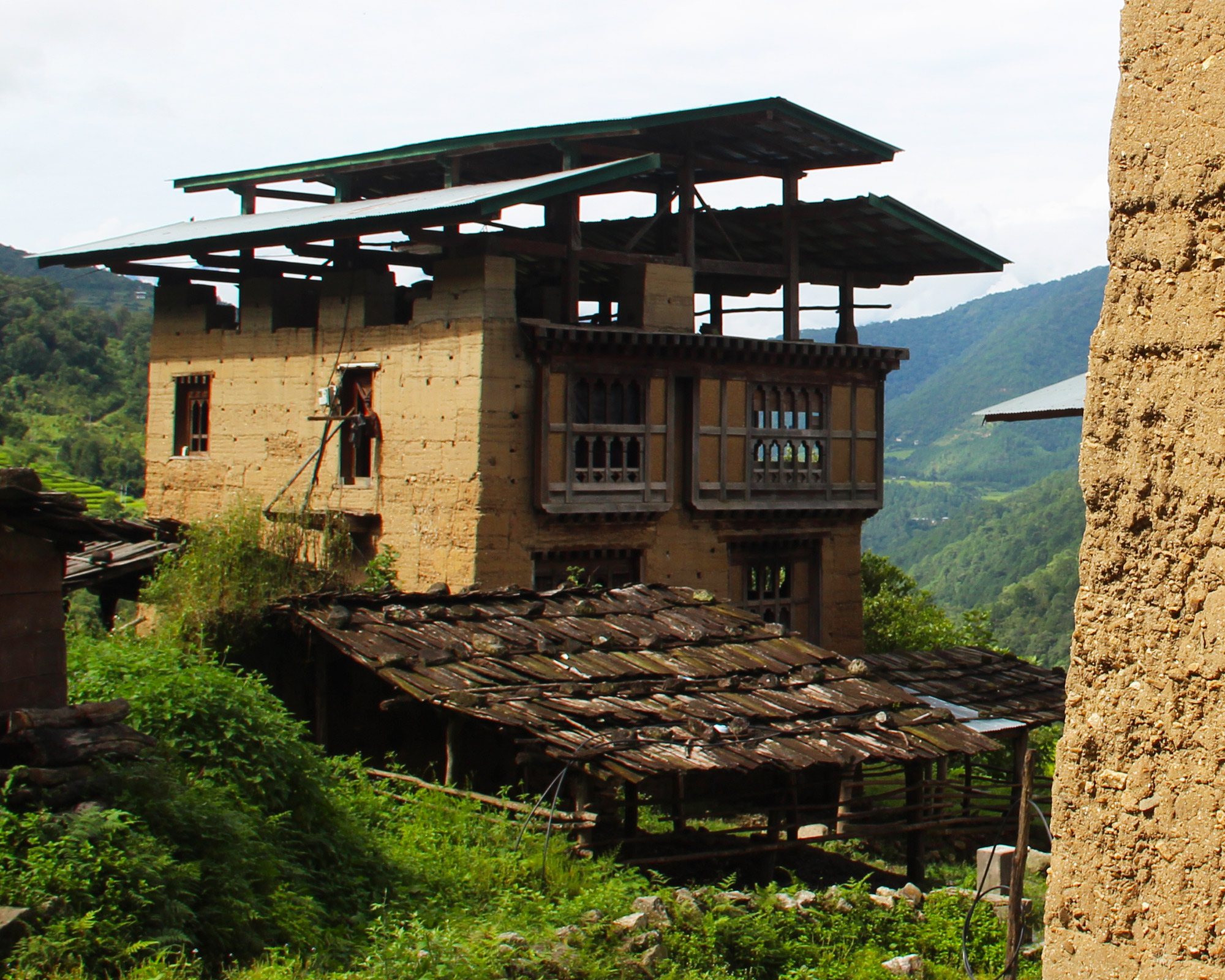
People from the village come together to build the rammed earth walls, their movements part of a symphony. A group of them stand in the wooden formwork across the wall, ramming the earth with the rhythm of their chanting as they pray and sing for the good of the house. One team prepares the mix, another passes it along, all of them working in harmony and synchronised perfection. The mud is mixed with natural additives, depending on the soil and its quality. The earth walls are excellent insulators, keeping homes warm in winter and cool in summer. Everyone seems to enjoy the process, passing their enthusiastic energies into the wall. The days end with sharing of chaangChhaang or chang is a Nepalese and Tibetan alcoholic beverage also popular in parts of the eastern Himalayas. to relax the body and elevate the spirit! It is a process that is so much a part of the life here – shared, simple, with struggles and difficulties being philosophically accepted as what the almighty has ordained.
Vignettes

